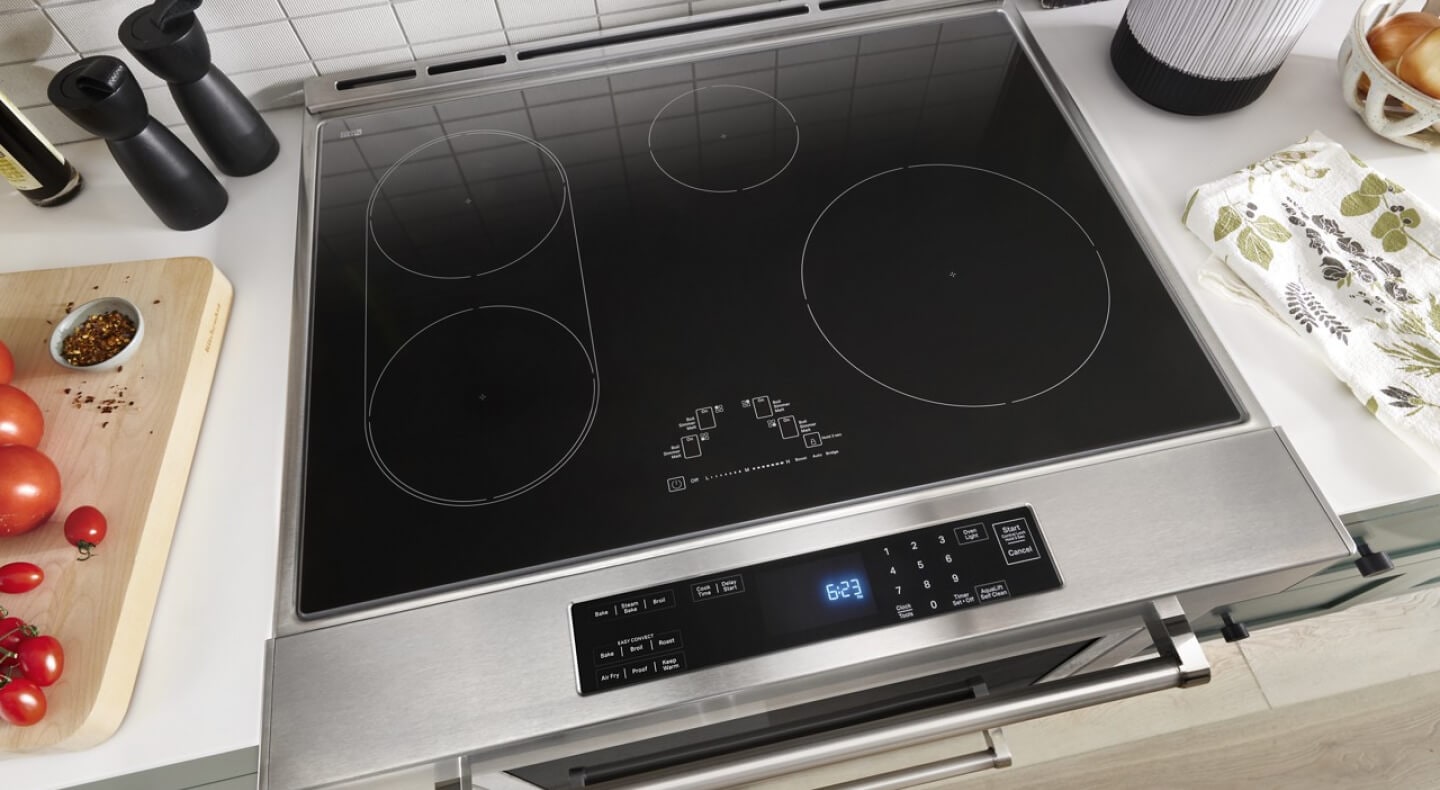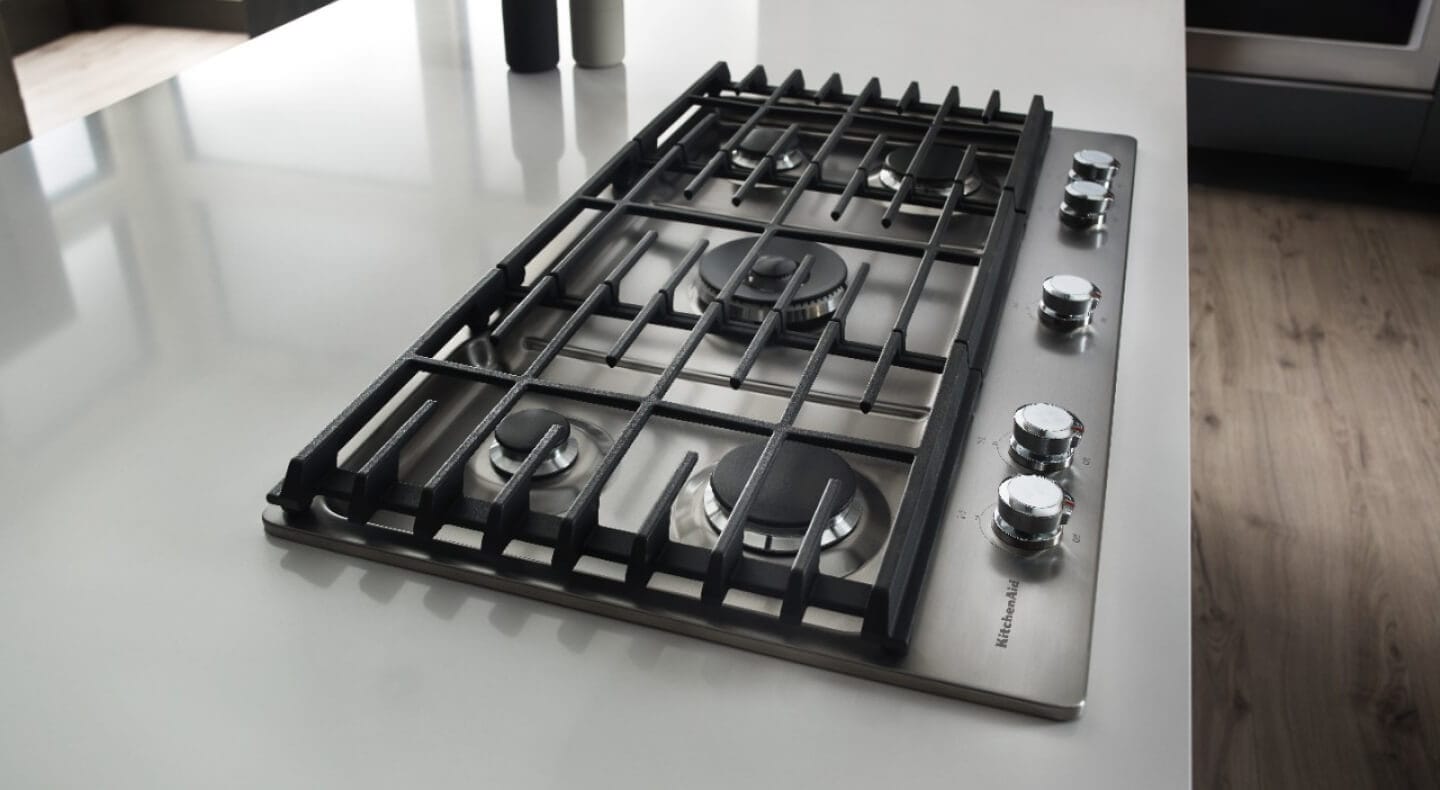
Induction vs. Gas cooktops and ranges
Induction and gas cooktops are both versatile options for your kitchen, each empowering you to get creative in different ways. Gas cooktops require a gas line and rely on an open flame, while induction cooktops use electromagnetism to transform compatible cookware into its own source of heat. Each style comes with unique advantages and features, making the right choice dependent on your cooking habits and kitchen design.
Read on to learn more about induction vs. gas cooktops and decide which option is best for the way you make.
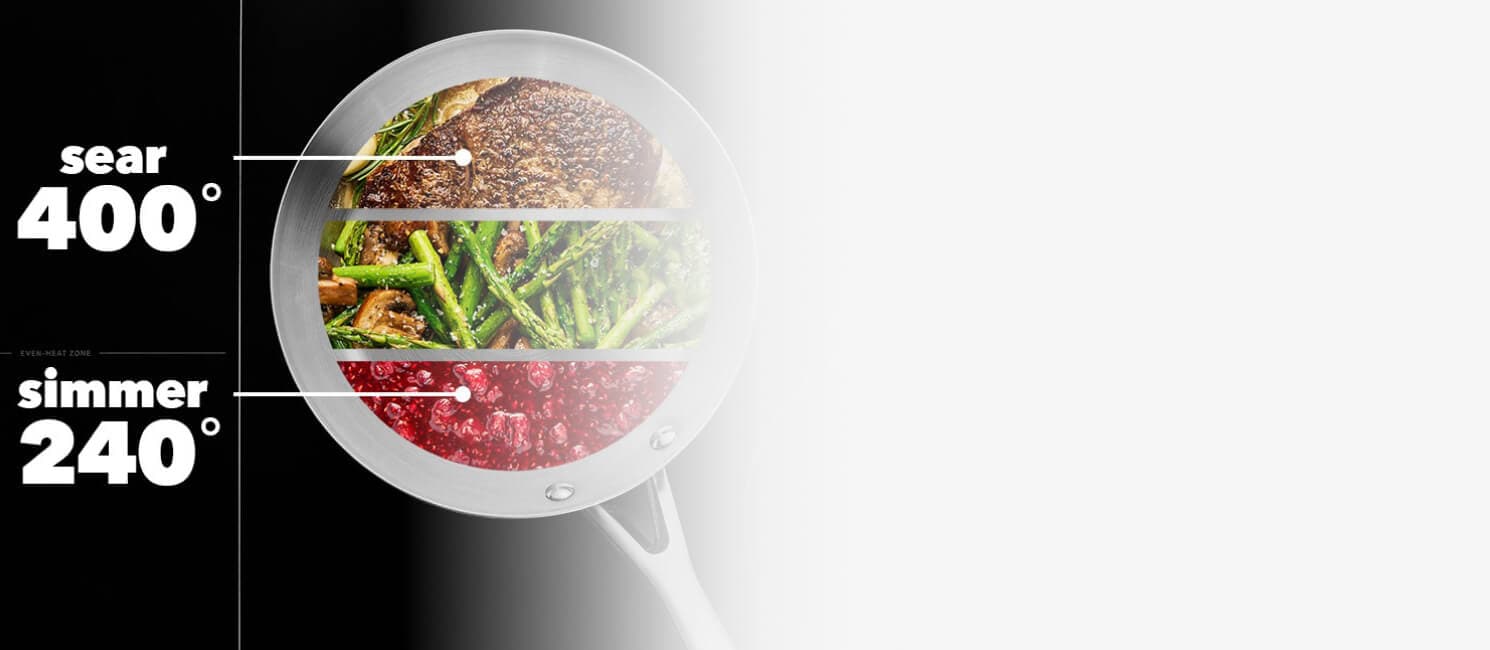
KitchenAid® Temp Cook™ Induction Technology
Take on your next ambitious recipe
This KitchenAid® induction cooktop with Temp Cook™ Induction Technology maintains the precise temperature that you set for precise control beyond standard high, medium and low settings
Induction cooktops and ranges
Induction cooking uses coils beneath the glass surface to create a magnetic field. When induction-ready cookware is placed on the cooktop, the field generates heat within the pan, making it the heat source so food cooks and water boils quickly.
Induction ranges typically include an electric oven, which many chefs prefer for its dry heat, as it helps achieve nicely browned results in dishes like bread, roasted chicken and vegetables.
Induction cooktop and range pros
Features a sleek, quick-cooling surface that helps make cleanup simple
Heats up and cools down quickly
Delivers thorough heating across cookware
Eliminates the need for an existing gas hookup
Helps reduce heat loss between stovetop and cookware
Offers control to move from a boil to a simmer quickly
Can sometimes accommodate large, oddly shaped, or multiple pans with flexible cooking zones
Provides flush installation on certain models for a streamlined, built-in look
Induction cooktop and range cons
May require replacing cookware if it isn’t induction-compatible
Often comes with a learning curve for those who are new to induction technology
Can produce slight humming or buzzing noises at higher settings, along with fan sounds
- Home chefs may not be able to char or flambée on an induction cooktop or range
Gas cooktops and ranges
Gas ranges and cooktops use a dedicated gas line, installed by a professional if needed. Burners offer optimal heat control, from gentle melting to searing at high temperatures. In the oven, the flame cycles to maintain steady heat for cooking.
For added versatility, some kitchens feature a dual fuel range, which combines a gas cooktop with an electric oven. This option delivers the responsive temperature control of gas burners alongside the benefits of an electric oven.
Gas cooktop and range pros
Responsive stovetop heat with instant flame adjustments
Works with all types of cookware
Open flame reaches the sides of pans like woks or skillets
Great for expanded techniques, such as charring, flambéing or grilling with cast iron
Fast oven preheating gets food cooking
Gas cooktop and range cons
Grates can be harder to clean than a smooth electric or induction cooktop
Some heat is lost into the air vs. induction cooking
Purchase and installation can sometimes cost more than other types of cooktops and ranges
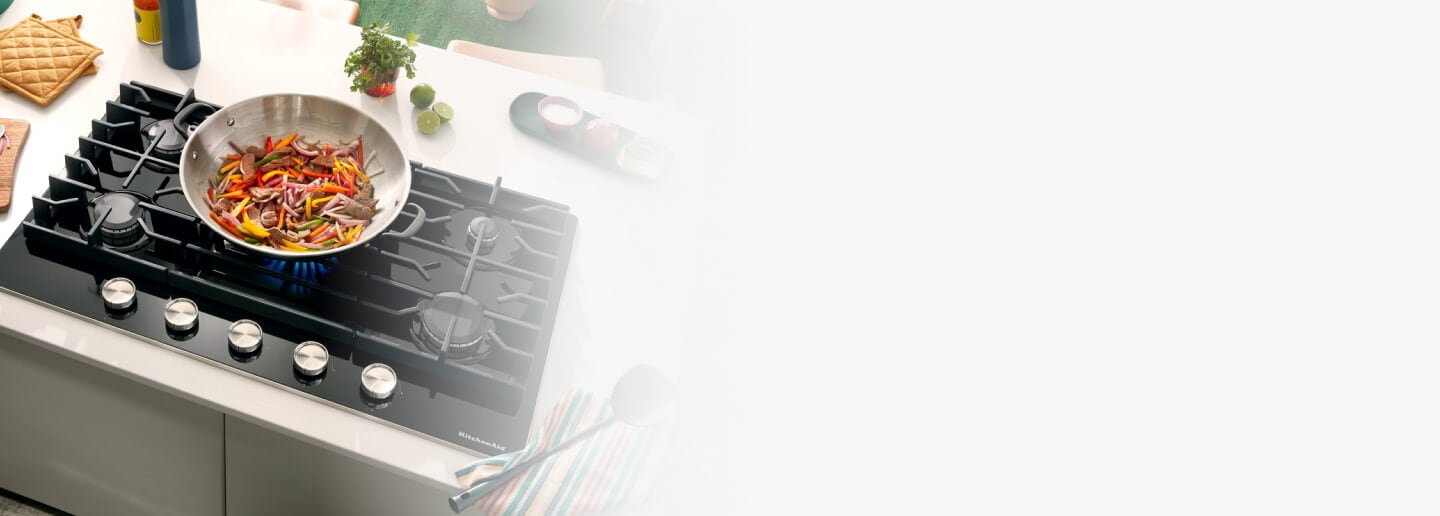
KitchenAid® cooktops
Cooktops made for every culinary adventure
KitchenAid® gas, electric and induction cooktops offer the versatility, performance and craftsmanship you need to create your favorite recipes
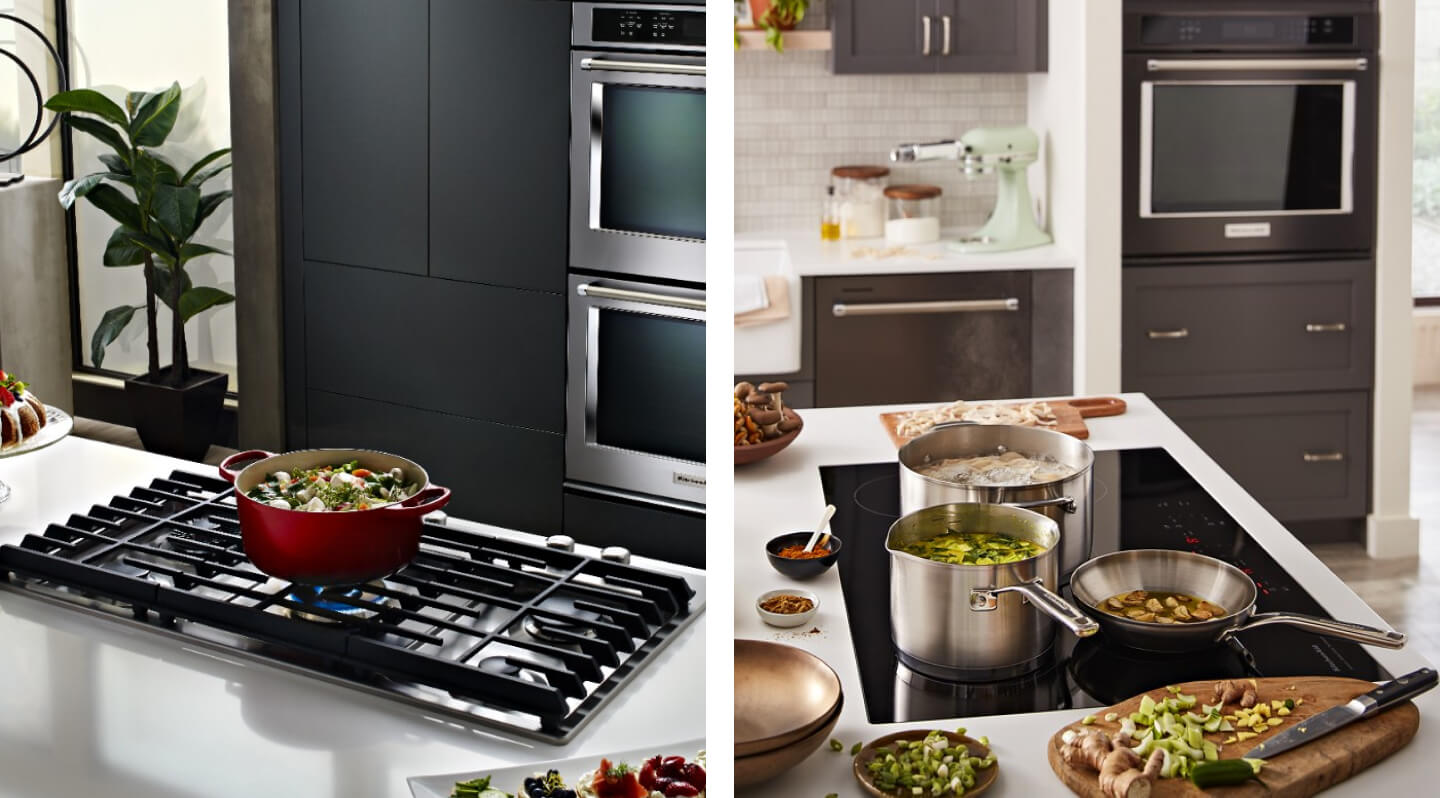
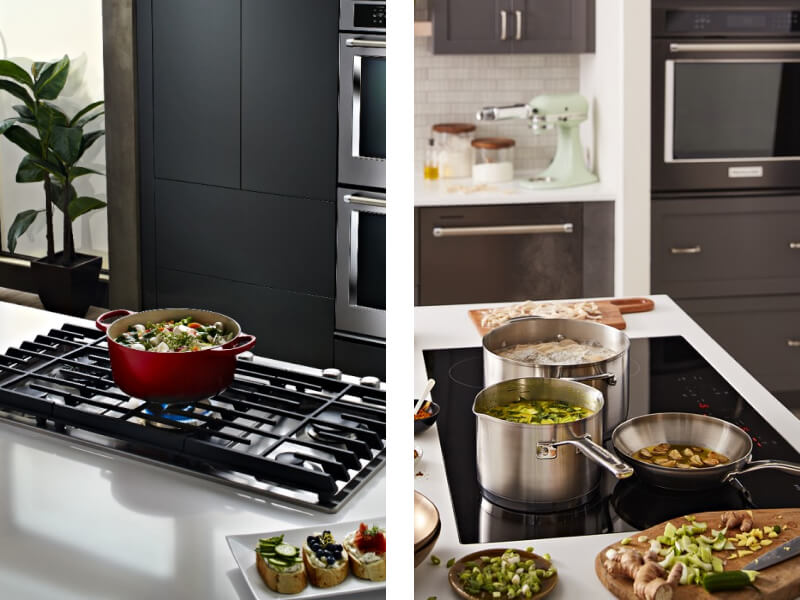
Gas vs. Induction: how to choose the best option for your kitchen
Gas offers responsive flame adjustments and typically works with most cookware, making it a favorite for specialty cooking styles. Induction delivers rapid heating, quick cooldowns and sleek surfaces that pair with electric ovens for evenly browned results. Dual-fuel ranges combine both for added versatility.
The decision between a gas or induction cooktop is ultimately up to you, the look you want in your kitchen and your priorities for energy use. Explore the considerations below to compare gas vs. induction cooking.
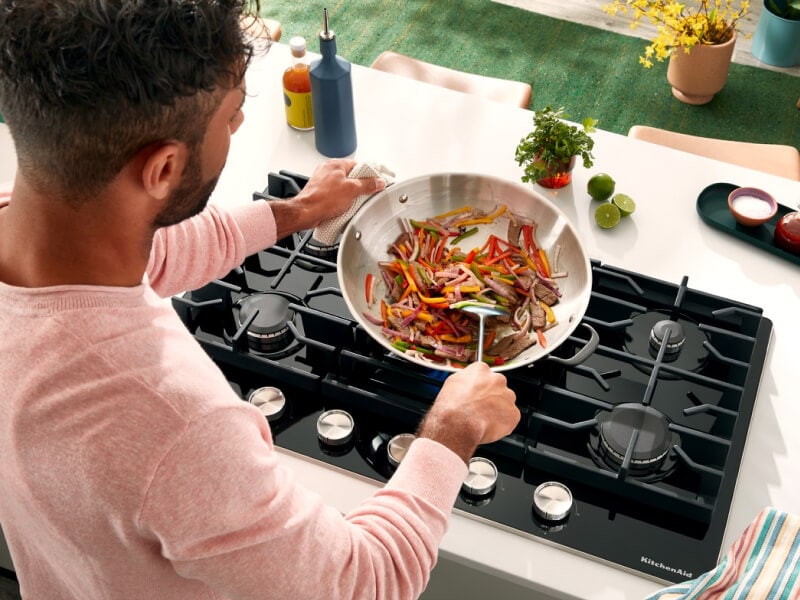
For the performance-driven cook
Gas excels at visual flame control and techniques like charring or stir-frying. Induction shines when you need responsive results for tasks like simmering or rapid boiling.
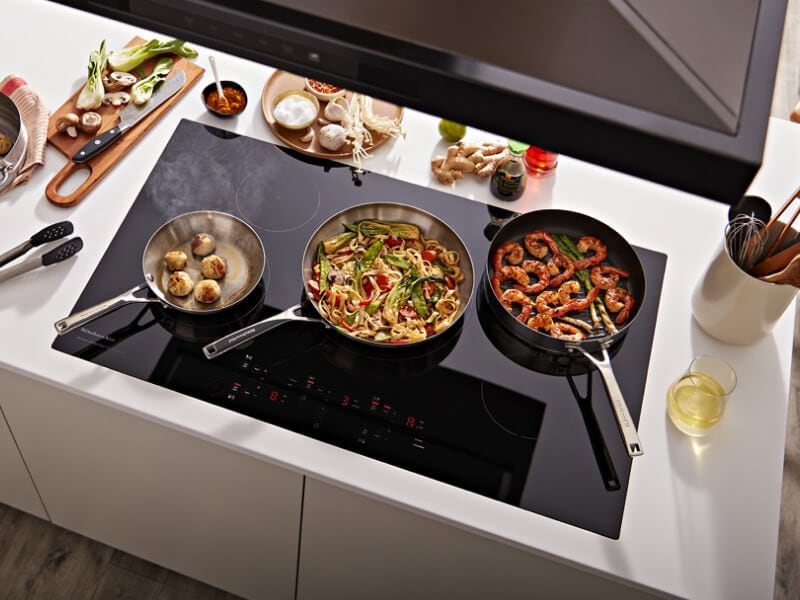
For the design-focused kitchen
Select induction ranges blend into countertops for a seamless, modern look, while select gas models can create a bold, restaurant-style statement.
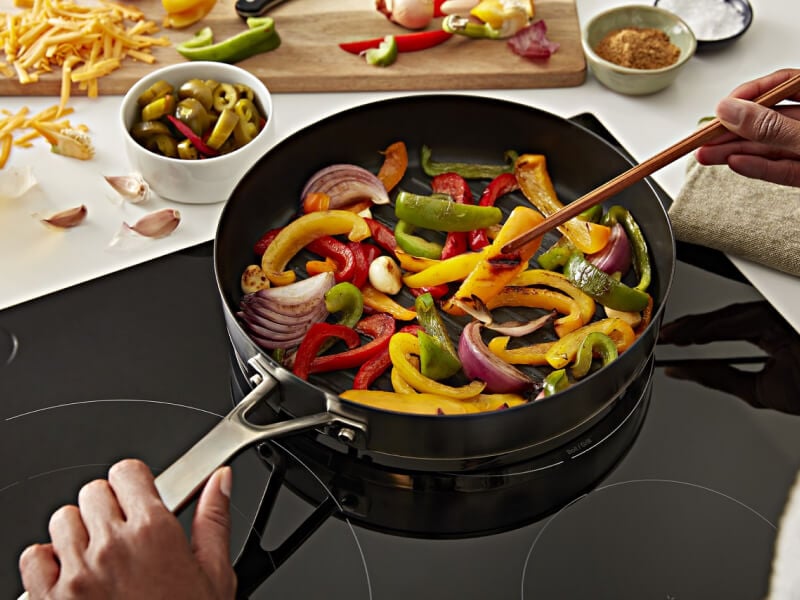
For energy efficiency
Induction leads in energy savings by directing heat straight into the cookware rather than the surrounding air. According to ENERGY STAR®, induction cooktops can be up to three times more efficient than gas, helping reduce overall energy use and easing the workload on your home’s HVAC system.
